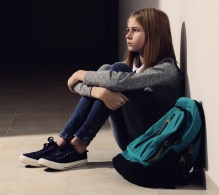School Safety Advice for Parents: Let’s Prepare and Not Scare Our Children
BY AMANDA NICKERSON AND JACLYN SCHILDKRAUT
As parents send their children to school, it is likely that tragic school shootings are on the forefront of their minds. A question everyone is asking is: How can we keep our children safe from violence? As researchers who study school safety, including preparing for and responding effectively to violence and other crises, we offer some advice—and cautions—for parents in talking to their children.
Listen and learn first. Parents can begin by finding out what their children already know about violence and recent events, as well as what they know about emergency preparedness. Be prepared to talk, but do not force it. Children’s questions can be the guide. Also look for cues that they want to talk, such as hovering around or mentioning things they have heard through friends or on social media.
Use developmentally appropriate explanations. Keep explanations brief and concrete for young children and avoid giving graphic details. Emphasize things being done to keep them safe, such as having caring adults in the school and practicing lockdown drills so they know what to do if there is a danger inside the building. Adolescents are more likely to have strong opinions about causes of violence and criticism for efforts to make schools safer. Try to understand their point of view and know when it may be time to take a break, use humor, or continue the conversation at another time if it becomes overly emotional.
Understand common reactions. When children are exposed to a tragic or violent event, they may have a wide variety of reactions. Younger children (preschool, kindergarten) may have problems sleeping, separating from parents, or they may use traumatic play. Elementary-age children can also have sleep disturbances, difficulty concentrating, or headaches and stomachaches. Adolescents may have revenge fantasies or engage in risky or destructive behavior. Parents can acknowledge that these are normal reactions in times of danger.
Help children cope. Keep routines for sleeping, eating and recreational activities. This can help to manage stress reactions by meeting basic needs. This does not mean that we should pretend that everything is normal. Ensure that children have the time, space and permission to be sad, angry and worried. Limit media exposure, as the time tuned into news coverage of events is related to trauma symptoms. Parents also should be mindful of their viewing habits when children are present.
Reach out for help. If stress reactions continue for more than a month, or if there are sudden changes in behavior or new problems, such as having flashbacks or reliving an event, avoiding school or social situations, experiencing panic (fast heart rate, trouble breathing) or making statements about harming oneself or others, get help. School-based mental health professionals, such as school counselors, school psychologists and school social workers, are an important resource. They can meet with the child, assess needs, and provide interventions and supports in the school setting. They also can assist with helping find community behavioral health treatment services.
Empower children to stay safe. Just as we teach children to fasten their seatbelt, wear a helmet and call 911 in an emergency, we should empower children to know what to do if they are in situations of violence or abuse. For example, there are resources that increase parents’ knowledge of and conversations with children about difficult topics such as sexual abuse. Also encourage children that if they see something to say something. The U.S. Secret Service’s Averting Targeted School Violence report emphasizes that students are best positioned to identify and report behaviors of their peers that are concerning. Support the activities that schools engage in to prevent and prepare for emergencies, such as conducting drills so that teachers, staff and students can practice skills needed to respond to a variety of threats and hazards, not just active shooters.
Although parents are understandably worried about school violence, we also need to remember to not burden children with our anxieties. Although a single act of violence is one too many, crime statistics show that schools are one of the safest places for children. Balancing accurate reassurances about safety while empowering children with knowledge and skills for when bad things happen is the best way to help prepare—and not scare.

Amanda Nickerson is a professor of school psychology and director of GSE’s Alberti Center for Bullying Abuse Prevention.

Jaclyn Schildkraut is the executive director of the Regional Gun Violence Research Consortium at the Rockefeller Institute of Government.
Cover Story
UB’s comprehensive approaches are reshaping literacy education, fostering community partnerships, and preparing future literacy professionals to tackle educational challenges.

